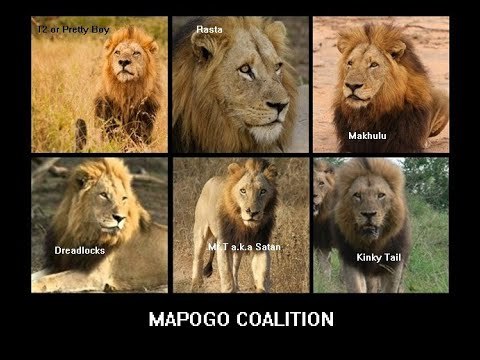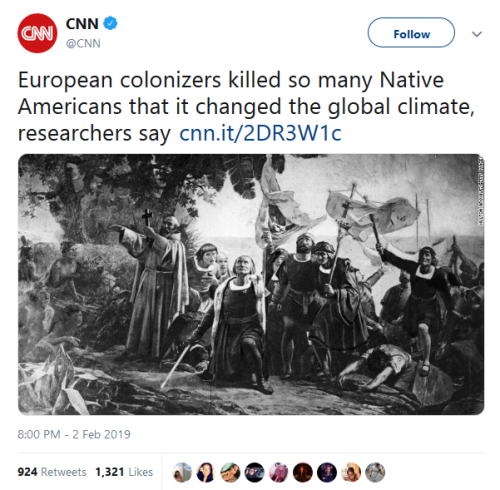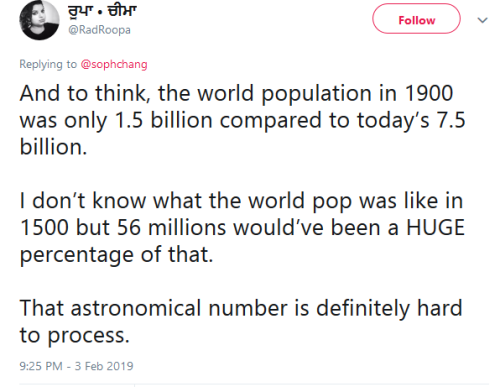Concept: An Aggressively Assimilationist Interstellar Hive-mind That’s Also Completely Pacifistic,
Concept: an aggressively assimilationist interstellar hive-mind that’s also completely pacifistic, so instead of devouring worlds and forcibly subsuming entire species, it sends its creepy drones around to conduct informational seminars and hand out explanatory pamphlets about why you should submit to the glory of the Swarm.
More Posts from Cruisinforabruising101 and Others

New Letterboxd list.
Any tips on how to design reproductive/family life for long lived species? If they could live for 1000 years, family might be extremely complicated because of the possibility of siblings born 700 years apart, having great great etc... grandchilden before your sibling is born. Vocabulary? How about fertility age? Could 700 years could be considered too old to reproduce? How about dynamics on age differences between partners? Anything else? (No interspecies at this time)
Tex: What’s their perspective of time? Does their environment change more rapidly than they do? It would be a little different for an elf in Middle Earth than, say, a vampire in New York City.
Regardless of a species’ window of child-bearing years and years of childhood itself, how their own biology is perceived is influenced by their environment and experiences. Would someone of your species have children 700 years apart? Would that be a long time between children for them, or a typical span where it’s normal to have one child nearly every thousand years?
A human who has a child at 25 might not have a child at 45, even if they’re physically able to do so. I imagine a similar decision-making process might be involved no matter the species, particularly if your species is capable of doing anything about it - that does bring in another nod to enculturation. Is it even considered appropriate to have children 700 years apart? If so, what would be considered the social advantages?
Do they have a religion that prioritizes reproducing often and whenever possible? Do they not? What would be the rationalization behind either dictation?
What if your species, because it is long-lived, has names for children born at certain stages of life? Would that change family dynamics? If so, how so? What about how timing of birth affecting who they’re socially permitted to become romantically or sexually involved with? What would be the rationale behind those sorts of norms?



Eve figuring out how to communicate with The Autumn Man. Magic can translate language quite well, but The Autumn Man has a hard time with mimicking, so speech doesn’t come naturally to him. But poking things? Sure, he can do that.
using non-human limbs to show a character’s expression is fantastic— fur bristling to show anger, big elf ears drooping to show sadness, tails swishing to show joy— but using non-human limbs as the only way to show a character’s expression is even better. a calm, stoic facade, their anger betrayed only by bristling fur. insisting they’re fine, but their ears are drooping. pretending they don’t care for hugs, but their tail is swishing madly.
Humans Are Weird: Growing Up
You know how must animals don’t look that different when they are infants to adults? Yeah, that. But then we get to animals such as insects and frogs. As you may (or may not) know, bugs start out as these worm-like things called larvae and when there’re adults, they become what we know them as. Same with frogs, but instead of being worm-like, they start as the fish-like tadpoles. What if the aliens we encounter work just like that? What if they start out as puffballs, worm-like, or something else and become a humanoid or something. And when we show them out young, they might be surprised (Assuming all life on their planet works that way).
So a xeno and a human male where in a bar talking about their species and looking at each other‘s photos.
Human: “And that’s my niece, Holly.”
Xeno: “She’s pretty small for an adult.” “Never knew your kind can get so small.”
Human: “No, no, no, she’s still a baby.”
Xeno: “Really?”
Human: “Yes.”
Xeno: “Well, that’s interesting, I thought your kids looked way different.” “Just look at my kids.”
The xeno then showed a picture of two light green, round, fluffy orb-like cretures with no showed facial features.
Xeno: “These two are my children, aren’t they cute?”
The human then looks surprised.
Human: “Ah… I guess…” “Can’t believe your kind looks like that.”
Xeno: “I’m just as surprised as you are.” “Now can I show you more of ‘em?”
Human: “Sure, why not…?”
(Yeah, I know the “Xeno and human talking and stuff” part isn’t the best example of writing, but hey, I tried. Please give me feedback so I can improve.)
“The female Utahraptor doesn’t have a name for herself. Her brain doesn’t operate with words, not even with silent, unspoken syllables. It works with images, colorful bursts of memory that make up a dreamlike history the brain constantly updates. Every day new experiences and new associations from her senses rearrange the symbolic registry. In her own brain the raptor identifies herself with the symbols she learned as a chick: ‘me… raptor… red.’ We can call her Raptor Red, because that’s how she labels herself in her own mental imagery.”
— -Raptor Red, Robert T. Bakker
Ya know what I hate? How in Science Fiction if there are aliens and humans, then the humans are ultra super special for whatever reason. Like they can’t just be there they have to ether be the main focus or the only species that matters! Apparently people can’t relate to aliens unless they are inherently superior.
Watching lion xenofiction and, why the most are literally copycats of the other? There's a lot of interesting things on lions life just to make the same thing over and over. And some of the "realistic behaviour" is not really realistic, is just a lot of misconceptions and stereotypes.
Just, Holy hell, i heard the entire story of the Mapogo lions coalition and why anybody writtes an story based on it? It's perfect, is HOLY SHIT like a xenofiction story actually happened. These lion coalitions have a LOT of potential to writte an story about it.




-
 manorinthewoods liked this · 2 months ago
manorinthewoods liked this · 2 months ago -
 pls-readnowayu liked this · 9 months ago
pls-readnowayu liked this · 9 months ago -
 paragrin liked this · 2 years ago
paragrin liked this · 2 years ago -
 cruisinforabruising101 reblogged this · 2 years ago
cruisinforabruising101 reblogged this · 2 years ago -
 cruisinforabruising101 liked this · 2 years ago
cruisinforabruising101 liked this · 2 years ago -
 the-gear-maker reblogged this · 2 years ago
the-gear-maker reblogged this · 2 years ago -
 cannibalistic-impulse liked this · 2 years ago
cannibalistic-impulse liked this · 2 years ago -
 reji8627 liked this · 2 years ago
reji8627 liked this · 2 years ago -
 uzi-doorknob liked this · 2 years ago
uzi-doorknob liked this · 2 years ago -
 a-blessed-feline liked this · 2 years ago
a-blessed-feline liked this · 2 years ago -
 achaironfire liked this · 2 years ago
achaironfire liked this · 2 years ago -
 my-thoughts-and-junk reblogged this · 2 years ago
my-thoughts-and-junk reblogged this · 2 years ago -
 theintelligentfool liked this · 3 years ago
theintelligentfool liked this · 3 years ago -
 xmaster3000 liked this · 3 years ago
xmaster3000 liked this · 3 years ago -
 ray-of-sunshinex3 liked this · 3 years ago
ray-of-sunshinex3 liked this · 3 years ago -
 daemonic-pants reblogged this · 4 years ago
daemonic-pants reblogged this · 4 years ago -
 daemonic-pants liked this · 4 years ago
daemonic-pants liked this · 4 years ago -
 susmanne liked this · 4 years ago
susmanne liked this · 4 years ago -
 9-circles-of-l liked this · 4 years ago
9-circles-of-l liked this · 4 years ago -
 dexterlovescoffee liked this · 4 years ago
dexterlovescoffee liked this · 4 years ago -
 wolfcat-hybrid reblogged this · 4 years ago
wolfcat-hybrid reblogged this · 4 years ago -
 wolfcat-hybrid liked this · 4 years ago
wolfcat-hybrid liked this · 4 years ago -
 theluckoftheclaws liked this · 4 years ago
theluckoftheclaws liked this · 4 years ago -
 technospaceviking liked this · 4 years ago
technospaceviking liked this · 4 years ago -
 coastalcomrade liked this · 4 years ago
coastalcomrade liked this · 4 years ago -
 drenchedindisappointment liked this · 4 years ago
drenchedindisappointment liked this · 4 years ago -
 bl00dh0rs3 liked this · 5 years ago
bl00dh0rs3 liked this · 5 years ago -
 jasjabberwocky liked this · 5 years ago
jasjabberwocky liked this · 5 years ago -
 this-blog-blocks-lackadaisy-fans reblogged this · 5 years ago
this-blog-blocks-lackadaisy-fans reblogged this · 5 years ago -
 this-blog-blocks-lackadaisy-fans liked this · 5 years ago
this-blog-blocks-lackadaisy-fans liked this · 5 years ago -
 quotesbooksandotherstuff liked this · 5 years ago
quotesbooksandotherstuff liked this · 5 years ago -
 abirdwrites liked this · 5 years ago
abirdwrites liked this · 5 years ago -
 i-am-done-let-me-rest liked this · 5 years ago
i-am-done-let-me-rest liked this · 5 years ago -
 regretti--spaghette-blog liked this · 5 years ago
regretti--spaghette-blog liked this · 5 years ago -
 steampoweredwerehog liked this · 6 years ago
steampoweredwerehog liked this · 6 years ago -
 paradoxeon liked this · 6 years ago
paradoxeon liked this · 6 years ago -
 rannuvk liked this · 6 years ago
rannuvk liked this · 6 years ago -
 bluesunsdusk liked this · 6 years ago
bluesunsdusk liked this · 6 years ago -
 sunnysynergy liked this · 6 years ago
sunnysynergy liked this · 6 years ago -
 knotty-hottie liked this · 6 years ago
knotty-hottie liked this · 6 years ago -
 thepillarsofmarsandvenus liked this · 6 years ago
thepillarsofmarsandvenus liked this · 6 years ago -
 themanwiththesuitcaseofflies liked this · 6 years ago
themanwiththesuitcaseofflies liked this · 6 years ago -
 commanderfarsight liked this · 6 years ago
commanderfarsight liked this · 6 years ago -
 trashringingslasher liked this · 6 years ago
trashringingslasher liked this · 6 years ago -
 sly-phoenix liked this · 7 years ago
sly-phoenix liked this · 7 years ago -
 ascholarlyengineer reblogged this · 7 years ago
ascholarlyengineer reblogged this · 7 years ago -
 secondary-to-reblog-fanworks reblogged this · 7 years ago
secondary-to-reblog-fanworks reblogged this · 7 years ago




